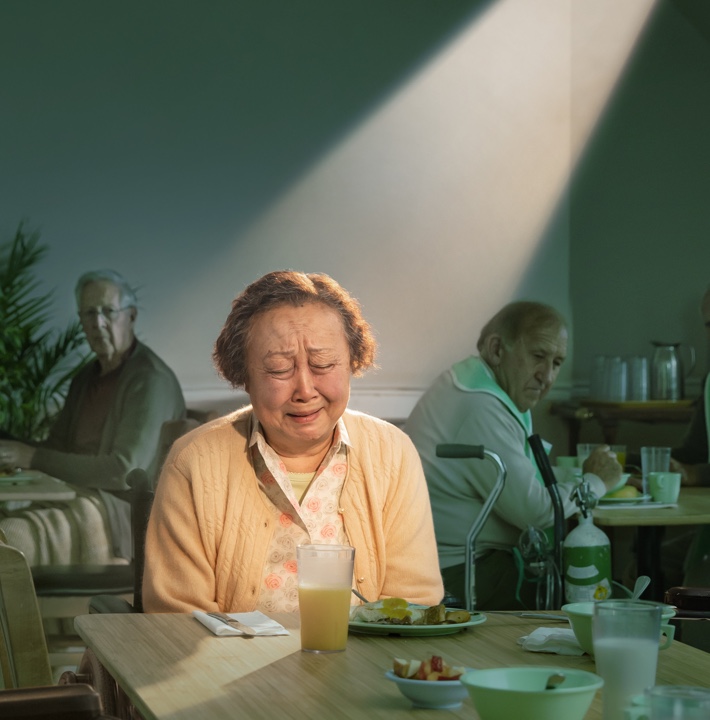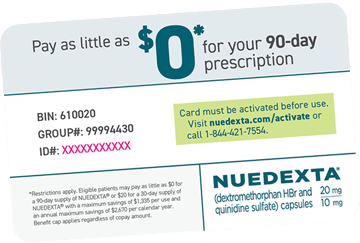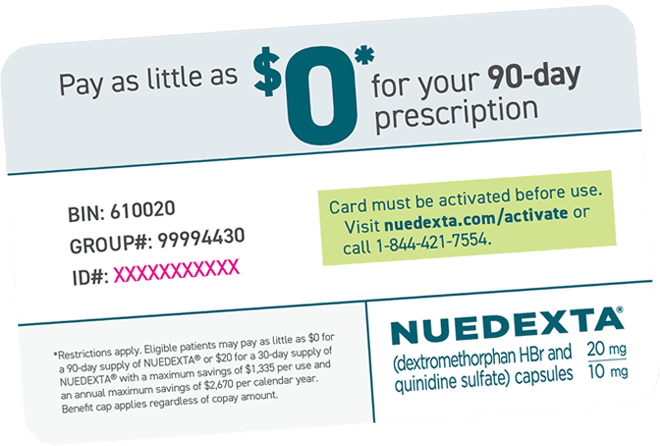PSEUDOBULBAR AFFECT (PBA) IN LONG-TERM CARE SETTINGS

Pseudobulbar Affect (PBA) symptoms are prevalent in residents with various underlying neurologic conditions
The number of residents experiencing involuntary, sudden, frequent laughing and/or crying episodes in your residential or assisted living community may be higher than you think.
17.5%
OF RESIDENTS
In an observational, retrospective study of long-term care (LTC) residents, a Center for Neurologic Study-Lability Scale (CNS-LS) score of 13 or greater, suggesting the presence of PBA symptoms, was reported in 17.5% (N = 412) of residents with a neurologic disorder that could be associated with PBA. 1
Continue reading to learn more about recognizing PBA's impact on LTC residents, listening for signs of PBA, and identifying the right treatment for those in your care.
Identifying residents with PBA
In LTC settings, like assisted living facilities, PBA may affect residents with neurologic conditions or brain injuries, including but not limited to: 1
- Stroke
- Dementia or Alzheimer's disease
- Parkinson's disease
- Hemiplegia
PBA is a distinct neurologic condition that occurs secondary to these other neurologic conditions or brain injuries. PBA also commonly co-occurs with depression and other mood or behavioral disorders. 2 In a study by Foley and colleagues, residents with PBA symptoms were more likely to have a documented mood disorder, particularly depression or anxiety. 1
Consider screening for PBA if your resident is experiencing involuntary, sudden, frequent laughing and/or crying episodes that appear exaggerated or incongruent to their underlying mood. If they have been diagnosed with and treated for depression but excessive crying episodes have persisted despite treatment, consider following the Steps to Diagnosis.
Nurses and caregivers play a key role in facilitating an accurate PBA diagnosis. In a U.S. survey of 256 nurses and paid caregivers in geriatric LTC facilities, 29.4% of participants reported that they witnessed symptoms that suggest PBA daily. They were most likely to record these symptoms in behavior monitoring logs (84.9%), nursing notes (89.4%), and resident care plans (70.6%). 3
PBA’s impact on your residents and their community

I cared for a resident who had a history of cerebrovascular accident or stroke. She had been struggling with depression and uncontrollable crying for years ... she stayed self-isolated in her room, never spoke to her roommate and did not attend communal dining or activities.
— Kandise Wilson, RN, director of nursing at a long-term care facility
PBA laughing and/or crying symptoms can have a substantial impact on residents living in long-term care facilities. Because PBA episodes are unpredictable, residents may have an uncontrollable episode during group activities, affecting their ability to participate. 3
Residents’ PBA episodes can also affect the larger community. Nurses and staff may need to spend more one-on-one time with those residents to help manage unpredictable episodes. Other residents may feel frustrated if PBA episodes disrupt their routine or activities. 3
Listening for PBA
Your residents with complex neurologic conditions may not be able to talk to you about their symptoms and their caregivers may not understand what they are going through. To find out if PBA may be impacting a resident in your care, ask yourself:
Do I hear any of my residents with a neurologic condition or brain injury laughing or crying inappropriately?
A proper diagnosis is crucial to prescribing the correct treatment
Residents in long-term care or assisted living facilities may be living with multiple conditions and require a complex treatment plan. As such, it is important to make a proper PBA diagnosis to prescribe the appropriate regimen.
NUEDEXTA is the first and only FDA-approved treatment for PBA.5 NUEDEXTA is classified as "Central Nervous System - Other." It is not categorized as an antipsychotic medication or controlled substance.6





